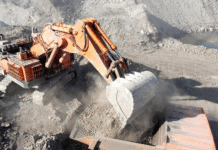Traffic bollards might seem small, but their impact is massive. These posts are a silent force behind safer roads, from preventing accidents to guiding vehicles and protecting pedestrians. In this detailed guide, explore bollards’ types, benefits, and importance, and learn why they’re essential to modern urban planning and safety solutions.
Millions of vehicles move through cities, towns, and highways daily. With this constant motion comes the need for control, organisation, and safety. One of the most effective tools for guiding traffic and protecting pedestrians is often overlooked—the humble traffic bollard. These sturdy posts may not look impressive, but they play a critical role in maintaining order and reducing accidents on the road.
What Are Traffic Bollards?
Traffic bollards are short, vertical posts installed to control vehicle movement. They are often made of metal, plastic, or concrete and placed in specific areas to block or guide traffic.
Here’s where you’ll usually see them:
- On sidewalks near pedestrian crossings
- Around bike lanes
- At building entrances or driveways
- In parking lots or garage exits
- Along restricted zones or pedestrian-only areas
Although they look simple, traffic bollards are crucial in keeping vehicles in check and people safe.
Why Traffic Bollards Matter More Than Ever
With urban areas becoming more crowded, traffic congestion is a growing problem. At the same time, pedestrian injuries are on the rise. This is where bollards make a difference. They provide a visual and physical barrier, reminding drivers to slow down or redirecting them away from restricted zones.
Let’s look at a few key reasons they’re so important:
- Prevent unauthorised vehicle access: Bollards can stop vehicles from entering areas where only pedestrians or cyclists are allowed.
- Protect people and infrastructure: They act as shields outside buildings or on sidewalks, offering physical protection from traffic mishaps or deliberate attacks.
- Enhance traffic flow: By guiding cars through specific paths, bollards reduce confusion and help avoid collisions.
- Improve aesthetics and order: Modern bollards come in various designs that can blend with the surrounding area, offering safety without looking out of place.
Types of Traffic Bollards
There isn’t a one-size-fits-all solution. Depending on the location and need, different types of bollards are used. Here are the most common ones:
1. Fixed Bollards: These are permanently embedded in the ground. They are strong and immovable and best for long-term installations like protecting buildings or walkways.
2. Removable Bollards: As the name suggests, these can be taken out when needed. They’re used in areas that need occasional vehicle access, like event spaces or markets.
3. Retractable (Telescopic) Bollards: These bollards can rise and sink into the ground using a manual or automatic system. They’re ideal for places requiring high-security access, like private driveways or sensitive government areas.
4. Flexible Bollards: These bend on impact and then return to shape. They are perfect for high-traffic zones where minor bumps are expected, such as parking lots.
Where Bollards Make the Most Impact
From urban cities to small towns, bollards are used in places with high traffic or requiring strict access control.
- Pedestrian Zones: Bollards keep cars out in busy shopping districts or town squares so people can walk safely.
- School Areas: Children are unpredictable. Bollards outside schools act as a protective barrier against careless driving.
- Public Events: Concerts, parades, or fairs often use removable bollards to manage the crowd and restrict vehicle movement.
- Commercial and Industrial Areas: Warehouses, factories, and loading docks use bollards to protect buildings and workers from accidental damage.
Benefits Beyond Road Safety
While their primary purpose is safety, bollards also bring other advantages:
- Cost-effective safety solution: Installing bollards is often cheaper than redesigning roads or hiring more personnel.
- Low maintenance: Once installed, most bollards require little upkeep.
- Environmentally friendly options: Some bollards are made from recycled materials or designed to absorb energy from impact, reducing damage to both vehicles and surroundings.
Design and Innovation in Modern Bollards
Today’s bollards are not just functional but are also designed to look good. Cities are investing in stylish bollards that blend with urban decor. Some even come with built-in lights or reflectors for nighttime visibility. There are even “smart” bollards now that can communicate with sensors or security systems for added control.
Key Considerations When Choosing Bollards
Not all bollards suit every location. Here are a few factors to think about:
- Purpose – Is it for stopping vehicles or guiding them?
- Material – Does it need to be heavy-duty or flexible?
- Location – Will it be exposed to weather or heavy traffic?
- Appearance – Should it match the area’s design or stand out as a warning?
Consulting a safety expert or road engineer can help you decide what type of bollard is best for your needs.
The Future of Road Safety with Bollards
As our roads get busier, we need more innovative solutions to keep them safe. Bollards, though small, are proving to be essential tools in urban planning and traffic management. With better materials, more innovative technology, and thoughtful design, they will continue to evolve and offer more than just protection—they’ll be a part of how we shape our safe, walkable, and organised cities.
Conclusion: A Small Post with Big Impact
It’s easy to ignore something as simple as a post by the side of the road. But traffic bollards are doing more than you think. They’re quietly saving lives, guiding traffic, and protecting spaces daily. As cityscapes change and roads become busier, these unsung heroes of road safety will only become more valuable. Whether it’s a bustling city centre or a quiet residential lane, the right bollard in the right place can make all the difference.





















